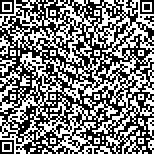| 本文已被:浏览 800次 下载 1291次 |

码上扫一扫! |
|
|
| 南海3种小型砗磲的外壳形态差异分析 |
|
钞琪琪1, 杨毅1, 顾志峰1,2, 王爱民1,2, LÓPEZ Violeta3, 刘春胜1,2
|
|
1.海南大学海洋学院, 海南 海口 570228;2.海南大学南海海洋资源利用国家重点实验室, 海南 海口 570228;3.西班牙国家自然科学博物馆, 西班牙 马德里 28006
|
|
| 摘要: |
| 本研究对中国南海3种小型砗磲(Tridacnaspp.)[番红砗磲(Tridacnacrocea,包括2种外壳形态)、长砗磲(Tridacna maxima)和诺亚砗磲(Tridacna noae)]的外壳形态性状进行生物统计学差异分析。研究表明,4组砗磲外壳存在显著形态学差异。单因素方差分析发现9个外壳比例性状能够较好区分3种砗磲,且2种不同外壳形态的番红砗磲在壳宽/壳长、足丝孔宽/壳长、壳质量/壳长和左右壳厚比壳长存在显著性差异(P<0.05);在基于欧氏距离Ward法且指定聚类数k=4的条件下,4组砗磲层次聚类效果较好;主成分分析提取3个主成分建立散点图,累计主成分贡献率73.85%,各主成分贡献率依次为50.47%,13.78%和9.60%;线性判别分析得出3个判别函数,方差解释率依次为70.13%、20.97%和8.90%。3种多元统计方法从不同角度解释各组砗磲的外壳形态差异,结果均显示两组番红砗磲的外壳形态更为接近,同时长砗磲与诺亚砗磲的外壳形态较为接近。 |
| 关键词: 砗磲(Tridacna spp.) 外壳形态 多元统计分析 南海 |
| DOI:10.11759/hykx20210925005 |
| 分类号:Q179 |
| 基金项目:国家自然科学基金项目(42266003);海南省重点研发项目(ZDYF2019153) |
|
| Morphological variation in shells of three small giant clam species in the South China Sea |
|
CHAO Qi-qi1, YANG Yi1, GU Zhi-feng1,2, WANG Ai-min1,2, LÓPEZ Violeta3, LIU Chun-sheng1,2
|
|
1.Ocean College, Hainan University, Haikou 570228, China;2.Key Laboratory of Tropical Biological Resources of Ministry of Education, Hainan University, Haikou 570228, China;3.Spanish National Museum of Natural Sciences, Madrid 28006, Spain
|
| Abstract: |
| In this study, biostatistical analysis was conducted on the shell morphological traits of three small giant clam species: Tridacna maxima, T. noae, and two shell-shape groups of T. crocea native to the South China Sea. Noteworthy variations in shell morphological traits were observed among the four giant clam groups. Analysis of variance showed that there were significant differences in the ratio of SW/SL, BHW/SL, SM/SL, LBT/SL, and RBT/SL between the two groups of T. crocea (P < 0.05). Hierarchical clustering of these four giant clam groups was found to be more effective under the conditions of the Euclidean distance Ward method and the specified cluster number was k = 4. Total three principal components were extracted from PCA to establish a scatterplot. The cumulative contribution rate of principal components was 73.85%, and the contribution rates of each principal component were 50.47%, 13.78%, and 9.60%. Three discriminant functions were obtained by LDA, and the variance explanation rates were 70.13%, 20.97%, and 8.90%, respectively. These three multivariate statistical methods could explain the differences in the shell morphology of four giant clam groups from various perspectives. Moreover, results showed that the shell morphology of the two T. crocea groups and of T. maxima and T. noae were more similar compared with other species. |
| Key words: giant clams shell morphology multivariate statistical analysis South China Sea |
